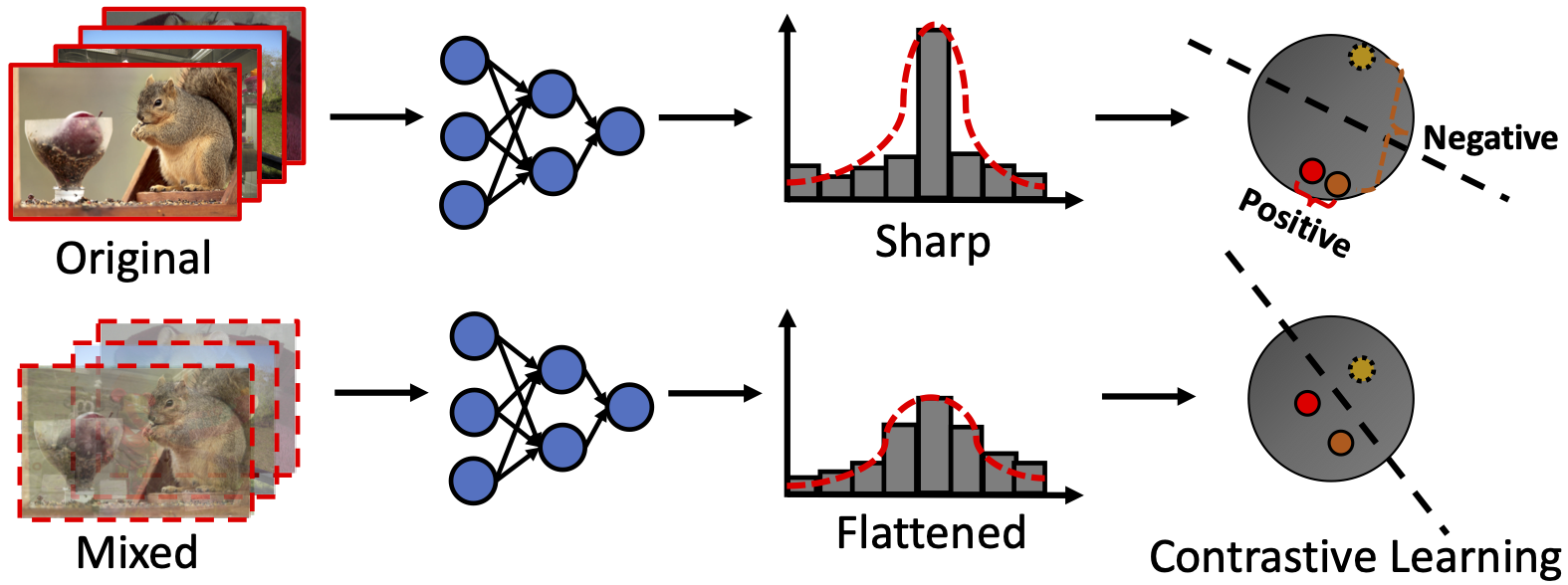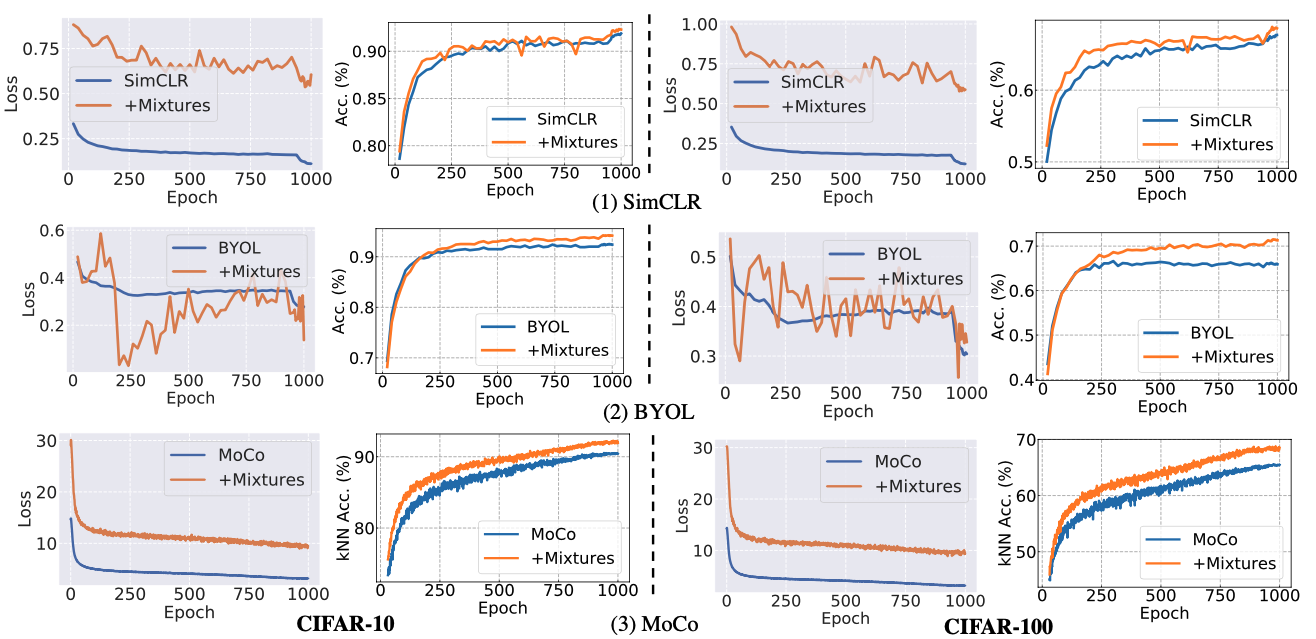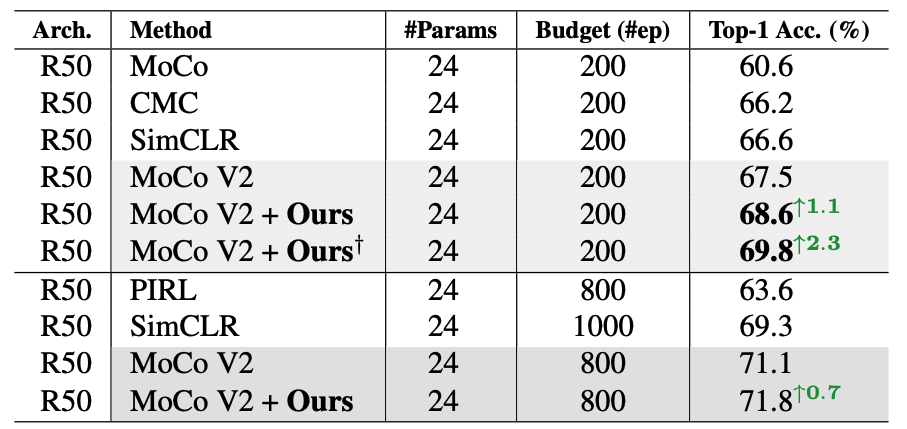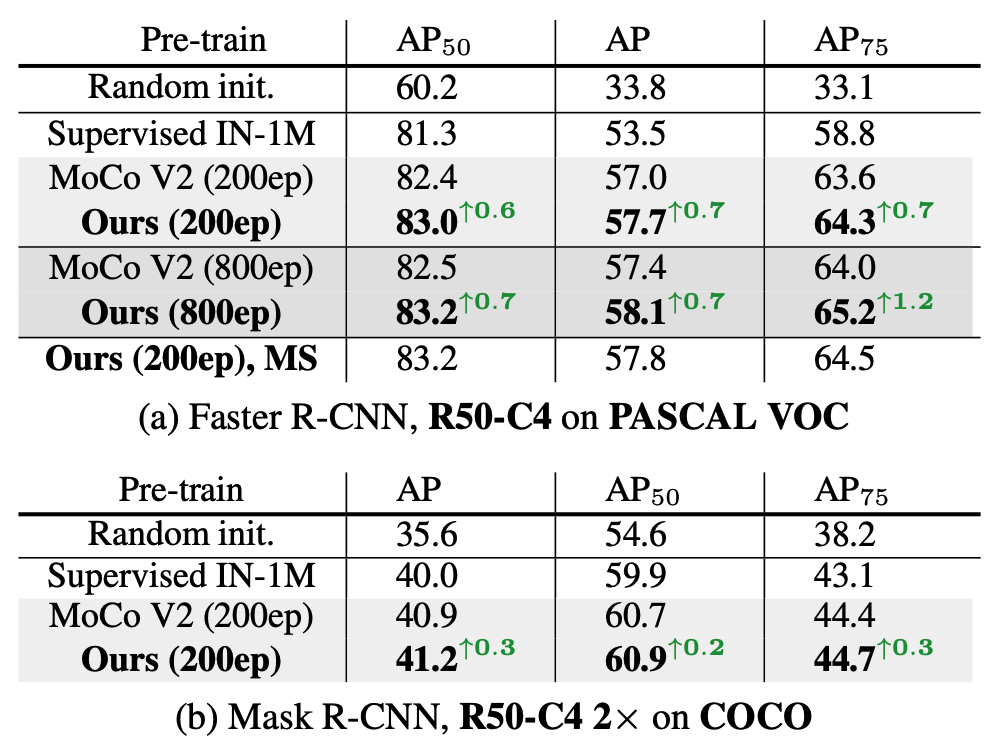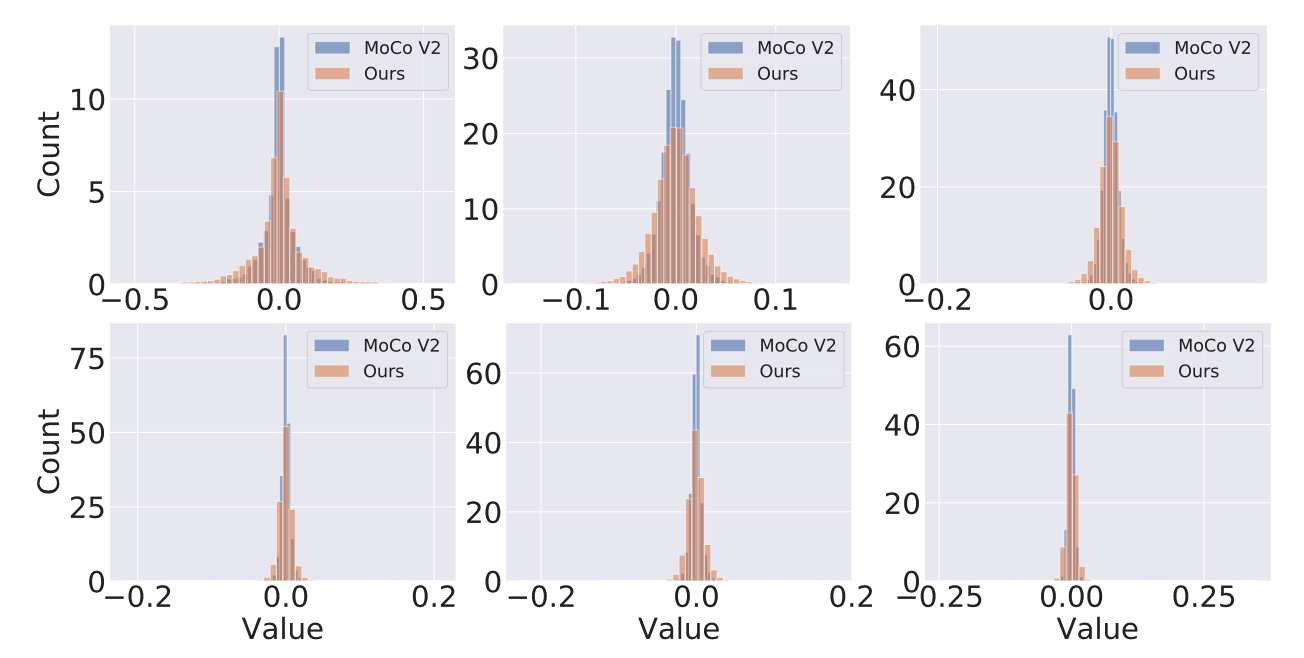New: We add more implementation code and models in this repo:
-
Un-Mix w/ SwAV on CIFAR-10 and CIFAR-100, please check our results and code out at ./UnMix_SwAV/for_CIFAR (93.0% accuracy on CIFAR-10 and 69.9% accuracy on CIFAR-100).
-
Un-Mix w/ SwAV on ImageNet-1K, please check it out at ./UnMix_SwAV/for_ImageNet.
(Insights of Un-Mix on clustering-based methods like SwAV can be found here.)
- Un-Mix w/ MoCo V1, V2 on ImageNet-1K, please check it out at ./UnMix_MoCo/for_ImageNet.
(Un-Mix w/ MoCo on CIFAR-10 and CIFAR-100 has already been included in this repo.)
Notes: As Un-Mix implementation on CIFAR with SwAV was done in 2020, while the SwAV authors simplified their cluster assignment implementation in April, 2021. Thus, our CIFAR code follows their old implementation before simplification, but the ImageNet code is based on their updated version. Nevertheless, the performance of them will not be affected.
-
Un-Mix has been accepted in AAAI 2022!! Please check out our camera-ready paper on arXiv.
-
We provide a demo of Un-Mix on CIFAR-10 and 100 adapted from Colab notebook of MoCo.
To train an Un-Mix model with MoCo and symmetric loss, run
unmix_c10.pyorunmix_c100.py:# CIFAR-10 CUDA_VISIBLE_DEVICES=0 python unmix_c10.py # CIFAR-100 CUDA_VISIBLE_DEVICES=1 python unmix_c100.pyResults on CIFAR-10:
Model epochs acc. (Top-1) weights (last) logs args MoCo w/ asymmetric1000 89.11% link link link +Un-Mix w/ asymmetric1000 91.34% link link link MoCo w/ symmetric1000 90.49% link link link +Un-Mix w/ symmetric1000 92.25% link link link Results on CIFAR-100:
Model epochs acc. (Top-1) weights (last) logs args MoCo w/ asymmetric1000 63.64% link link link +Un-Mix w/ asymmetric1000 67.33% link link link MoCo w/ symmetric1000 65.49% link link link +Un-Mix w/ symmetric1000 68.83% link link link -
Our pre-trained ResNet-50 model on ImageNet (MoCo V2 based) is available at: Download. The training code is available at: code.
We update our manuscript with a more comprehensive study using image mixtures method on unsupervised learning. The core codes of our method can be summarized as follows:
# P: probability of global or local level mixtures
# beta: hyperparameter for Beta distribution
# lam: mixture ratio in global-level mixture or bounding box location in region-level mixture
args.beta = 1.0
for x in loader: # load a minibatch x with N samples
# Probability of choosing global or local level mixtures
prob = np.random.rand(1)
lam = np.random.beta(args.beta, args.beta)
images_reverse = torch.flip(x[0], (0,))
if prob < args.P:
# global-level mixtures
mixed_images = lam*x[0]+(1-lam)* images_reverse
mixed_images_flip = torch.flip(mixed_images, (0,))
else:
# region-level mixtures
mixed_images = x[0].clone()
bbx1, bby1, bbx2, bby2 = utils.rand_bbox(x[0].size(), lam)
mixed_images[:, :, bbx1:bbx2, bby1:bby2] = images_reverse[:, :, bbx1:bbx2, bby1:bby2]
mixed_images_flip = torch.flip(mixed_images,(0,))
lam = 1 - ((bbx2 - bbx1) * (bby2 - bby1) / (x[0].size()[-1] * x[0].size()[-2]))
# original loss term
loss_ori = model(x)
# In following two losses, we found using ''x[0]'' may perform better on some particular datasets
# loss for the normal order of mixtures
loss_m1 = model([x[1], mixed_images])
# loss for the reverse order of mixtures
loss_m2 = model([x[1], mixed_images_flip])
# final loss function (our core code)
loss = loss_ori + lam * loss_m1 + (1-lam) * loss_m2
# update gradients
optimizer.zero_grad()
loss.backward()
optimizer.step()
...
This repo contains the implementation for Un-Mix: Rethinking Image Mixtures for Unsupervised Visual Representation Learning, which perturbs input image space to soften the output prediction space indirectly, meanwhile, assigning new label values in the unsupervised frameworks accordingly. So that the proposed method can smooth decision boundaries and prevent the learner from becoming over-confident.
We run our method with SimCLR, BYOL, MoCo and MoCo V2, the results are as follows:
If you find this repo useful for your research, please consider citing the paper
@inproceedings{shen2022unmix,
title={Un-Mix: Rethinking Image Mixtures for Unsupervised Visual Representation Learning},
author={Shen, Zhiqiang and Liu, Zechun and Liu, Zhuang and Savvides, Marios and Darrell, Trevor and Xing, Eric},
journal={Proceedings of the AAAI Conference on Artificial Intelligence (AAAI)},
year={2022}
}
For any questions and comments, please contact Zhiqiang Shen (zhiqiangshen0214 at gmail.com).
MoCo V1&V2 (https://github.com/facebookresearch/moco)
Whitening (https://github.com/htdt/self-supervised)
PyTorch Image Classification (https://github.com/hysts/pytorch_image_classification)
